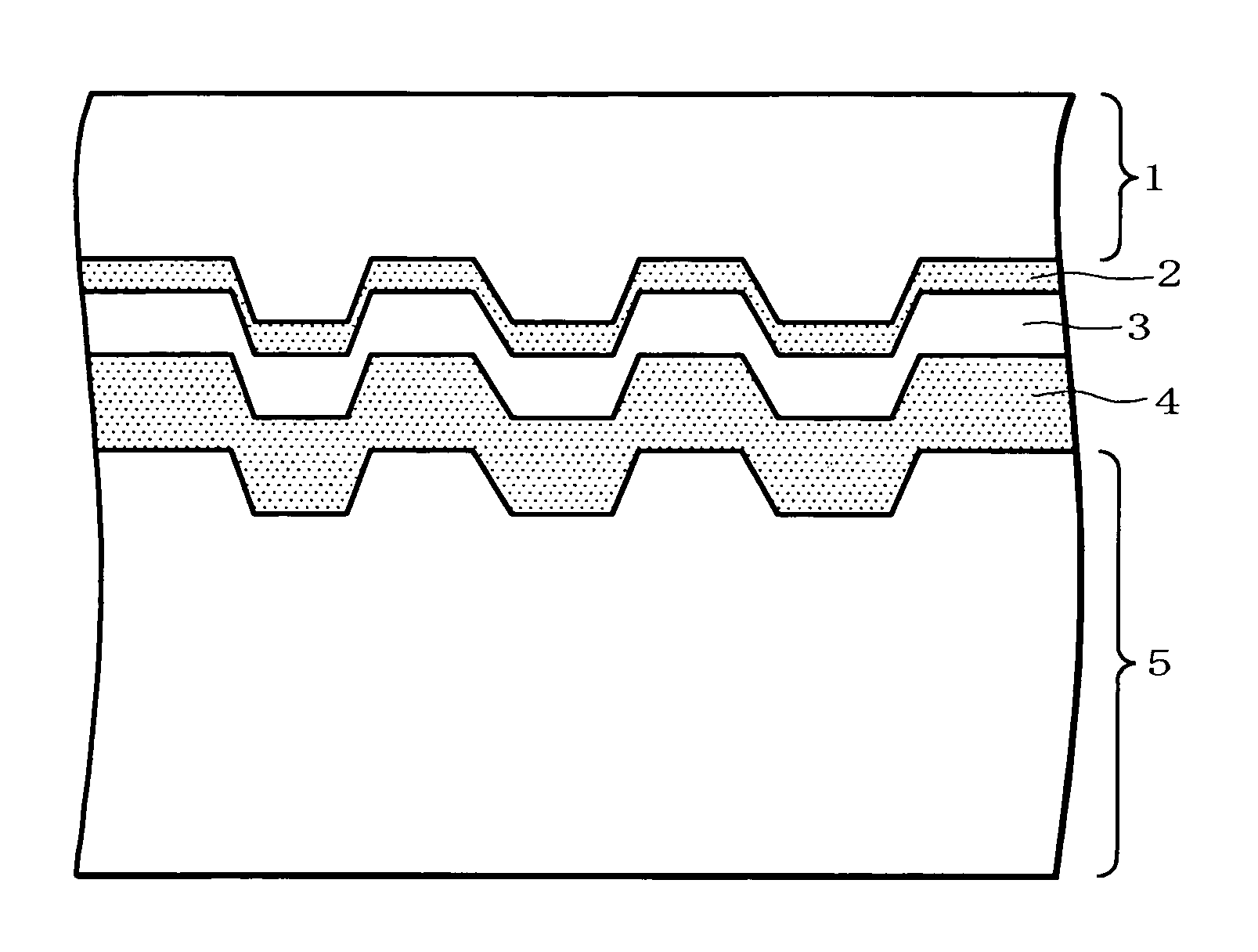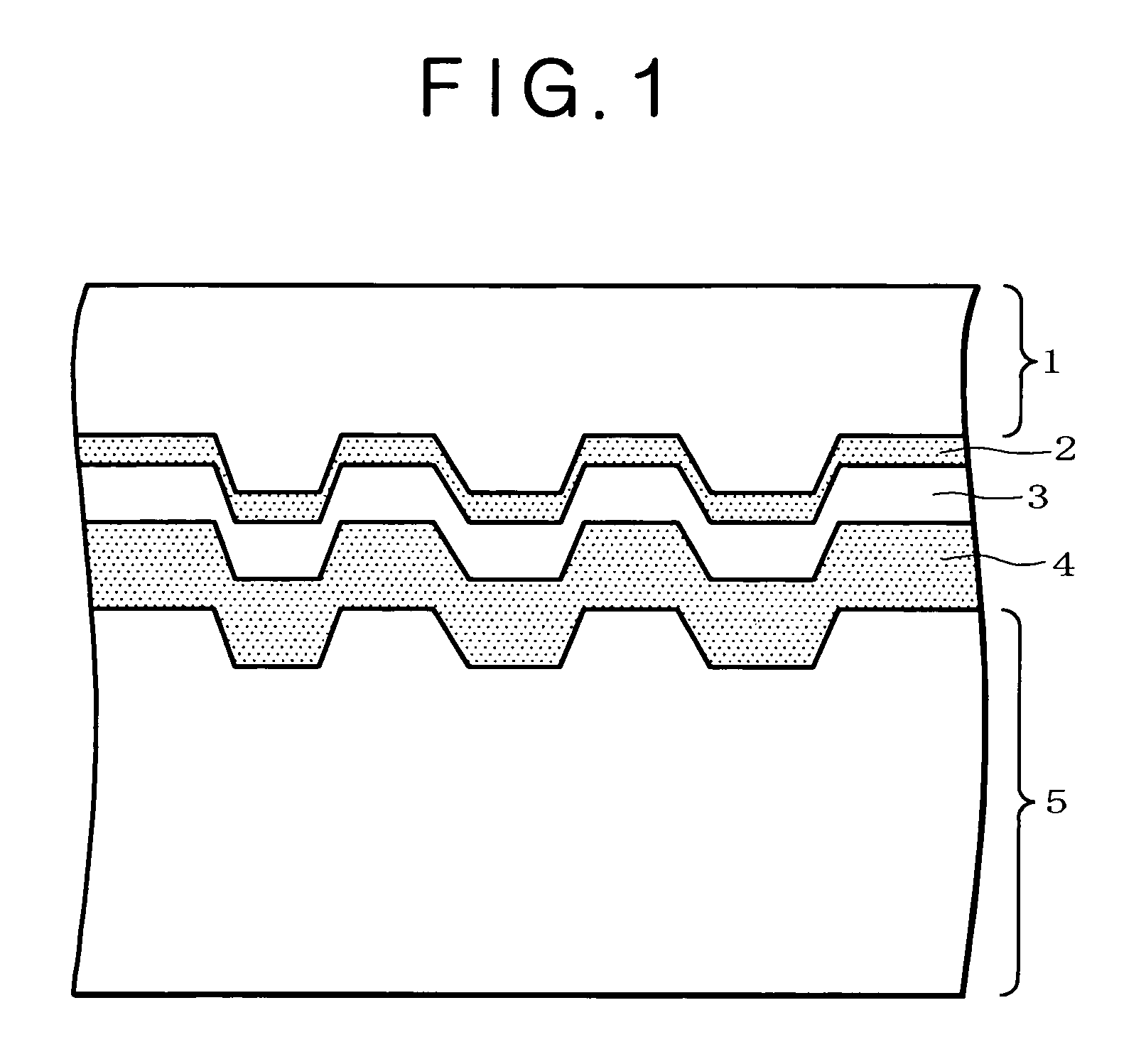Silver alloy reflective films for optical information recording media, silver alloy sputtering targets therefor, and optical information recording media
a technology of reflective films and optical information, applied in the field of silver alloy reflective films for optical information recording media, silver alloy reflective films for ag alloy sputtering targets therefor, can solve the problems of reflective film corrosion, inability to significantly give individual discs, damage to base materials including polycarbonate substrates and adhesive layers, etc., and achieves the effect of easy laser marking
- Summary
- Abstract
- Description
- Claims
- Application Information
AI Technical Summary
Benefits of technology
Problems solved by technology
Method used
Image
Examples
experimental example 1
[0044]On a polycarbonate substrate having a thickness of 0.6 mm and a diameter of 120 mm were deposited Ag—Bi—Cu alloy (Ag alloy comprising Bi and Cu) thin films, Ag—Bi—Ge alloy thin films, Ag—Bi—Mg alloy thin films, and Ag—Bi—Zn alloy thin films respectively by DC magnetron sputtering.
[0045]The thus-deposited Ag alloy thin films were subjected to determination of the melting temperature, thermal conductivity and reflectivity and to laser marking.
[0046]The melting temperatures of the Ag alloy thin films were measured in the following manner. A sample Ag alloy thin film having a thickness of 1 μm was peeled off from the substrate, and about 5 mg of the peeled film was collected and analyzed using a differential thermal analyzer (DTA). In this procedure, the average of the temperature at which the film starts to melt and the temperature at which the film melting is terminated was defined as the melting temperature. The thermal conductivity was converted from the electrical resistance ...
experimental example 2
[0053]Ag—Bi—Cu—Y alloy thin films were deposited on the same substrate as in Experimental Example 1, subjected to determination of the thermal conductivity and reflectivity, subjected to laser marking, and evaluated by the procedures of Experimental Example 1.
[0054]The results are shown in Table 2. Table 2 indicates that, by adding Y, the thin films can have further reduced thermal conductivities and can be further easily marked by laser. This effect is insufficient in the thin film having a Y content less than 0.1 atomic percent (No. 2A). The thin film having a Y content exceeding 3 atomic percent (No. 6A) has a low initial reflectivity and shows significant reduction of reflectivity in the environmental test.
[0055]Specifically, the thin films of Nos. 2A to 6A in Table 2 correspond to the Ag—0.1% Bi—15% Cu alloy thin film (No. 4) in Table 1, except for further comprising Y. Accordingly, they can be compared with the Ag—0.1% Bi—15% Cu alloy thin film (No. 4) in Table 1. The thin fil...
PUM
| Property | Measurement | Unit |
|---|---|---|
| thickness | aaaaa | aaaaa |
| thickness | aaaaa | aaaaa |
| thickness | aaaaa | aaaaa |
Abstract
Description
Claims
Application Information
 Login to View More
Login to View More - R&D
- Intellectual Property
- Life Sciences
- Materials
- Tech Scout
- Unparalleled Data Quality
- Higher Quality Content
- 60% Fewer Hallucinations
Browse by: Latest US Patents, China's latest patents, Technical Efficacy Thesaurus, Application Domain, Technology Topic, Popular Technical Reports.
© 2025 PatSnap. All rights reserved.Legal|Privacy policy|Modern Slavery Act Transparency Statement|Sitemap|About US| Contact US: help@patsnap.com


